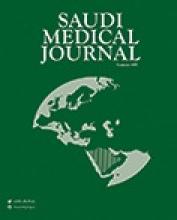To the Editor
I read with interest the article by Siti et al,1 on pediatric systemic lupus erythematosus, retrospective analysis of clinico-laboratory parameters and their association with systemic lupus erythematosus disease activity index score (SLEDAI). In which 32 p-SLE patients were reviewed, the most common clinical manifestation were renal disorder followed by malar rash and finally oral ulcer. More than half of the patients had active disease measured by the SLEDAI >6, which was significantly associated with heavy pyuria, elevated ANA titer and high ESR level.
Pediatric-onset SLE (pSLE) represents 10-20% of all SLE cases, they tend to have more fulminant onset, severe disease course and higher mortality rate.2 Even the clinical manifestation are different as demonstrated in a SLE registry which included 342 adult SLE (aSLE) and 79 pSLE. ediatric-onset SLE had more Lupus nephritis and mucucutenouse involvement, while aSLE had more neurological involvement and polyarthritis.3
When evaluating SLE patients, it is noteworthy to differentiate between activity index (such as SLEDAI) and damage indexes (such as SLICC), as the later includes several items that are more common among older populations and no items of growth or maturation which are specific to the pediatric age group.4
In this study, it is noticed that pSLE have High ESR and Pyuria which could be related to either to SLE flare versus active infection. A recent publication by the Michigan Lupus Cohort among 53 hospitalized SLE due to fever (28 flare and 25 infection), found that the ratio of ESR to CRP (ESR:CRP) may provide a superior diagnostic value to the individual ESR or CRP levels in distinguishing flare versus infection. Each unit increase in the ratio of ESR:CRP was associated with a 17% increase in the odds of fever being attributable to SLE flare compared to infection.5
Reply from the Author
We have no further comments pertaining to the correspondence and we agree with what has been raised up by Dr. Suzan Attar.
Wan Zuraida W. A. Hamid
Department of Immunology School of Medical Sciences Health Campus Universiti Sains Malaysia Kelantan, Malaysia
- Copyright: © Saudi Medical Journal
This is an open-access article distributed under the terms of the Creative Commons Attribution-Noncommercial-Share Alike 3.0 Unported, which permits unrestricted use, distribution, and reproduction in any medium, provided the original work is properly cited.






